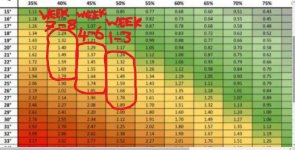greenspiritz
Active member
As the title says, how close is this chart? And is this what we should all be aiming for. For a perfect environment?
Anyone here specialised on this subject that could give me and others a more in-depth knowledge about the subject.
Thanks
Green
Anyone here specialised on this subject that could give me and others a more in-depth knowledge about the subject.
Thanks
Green








